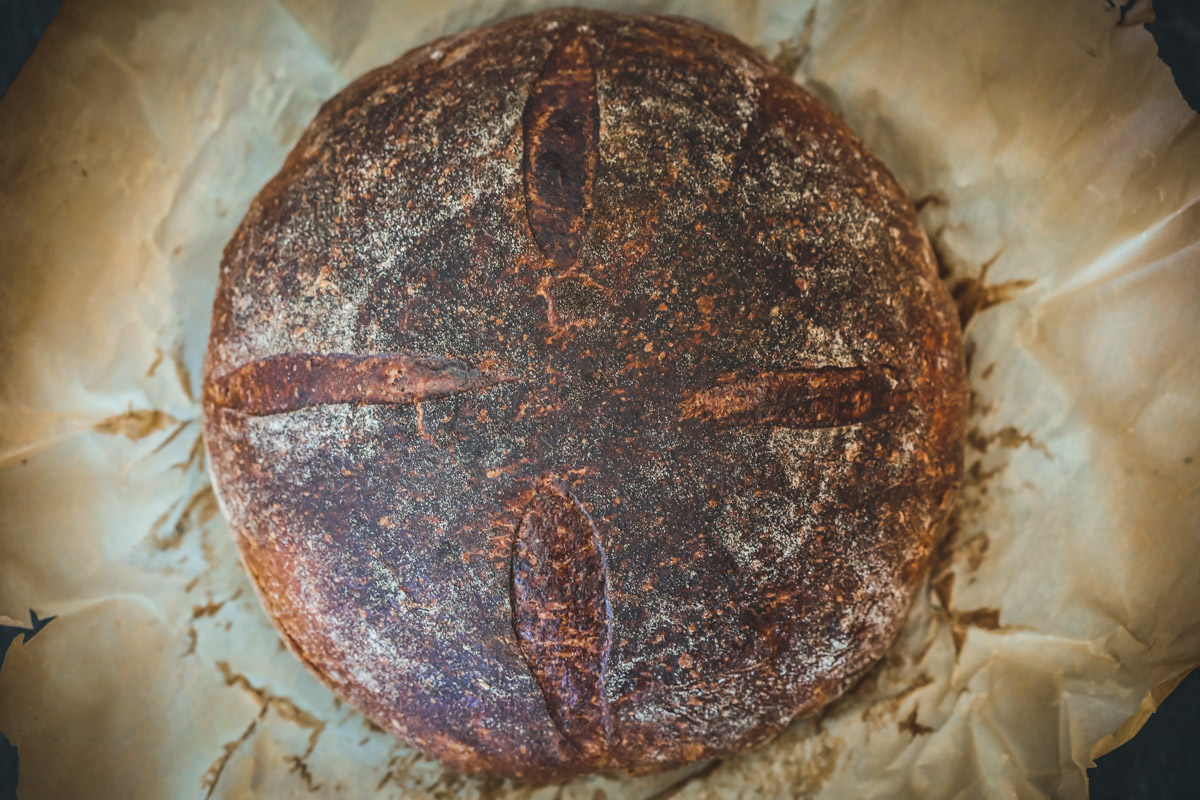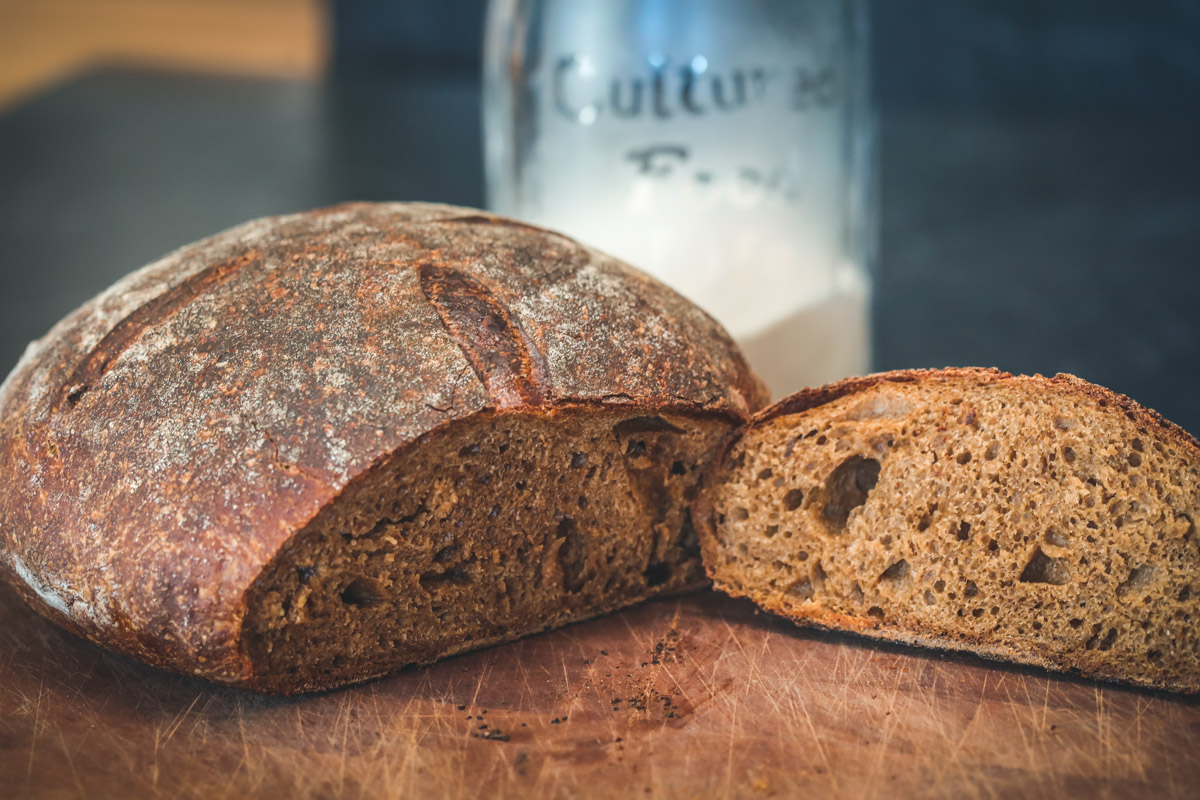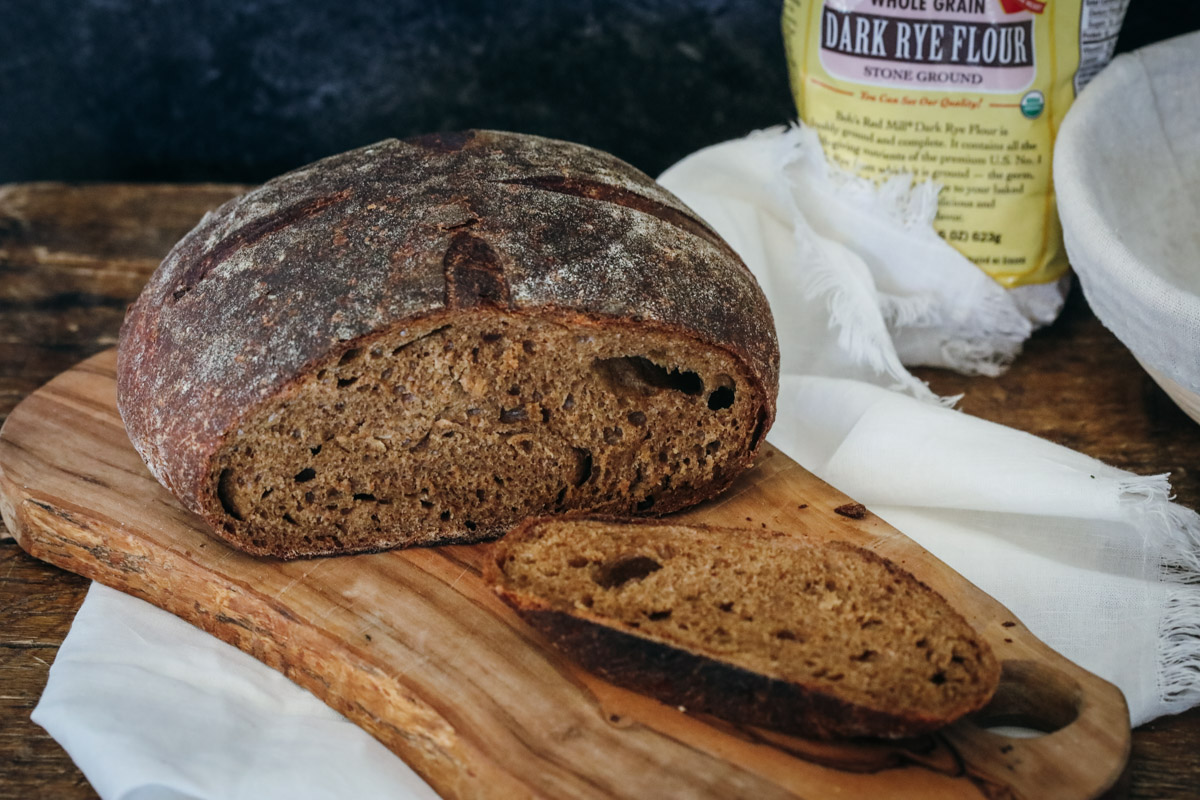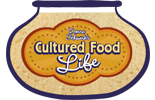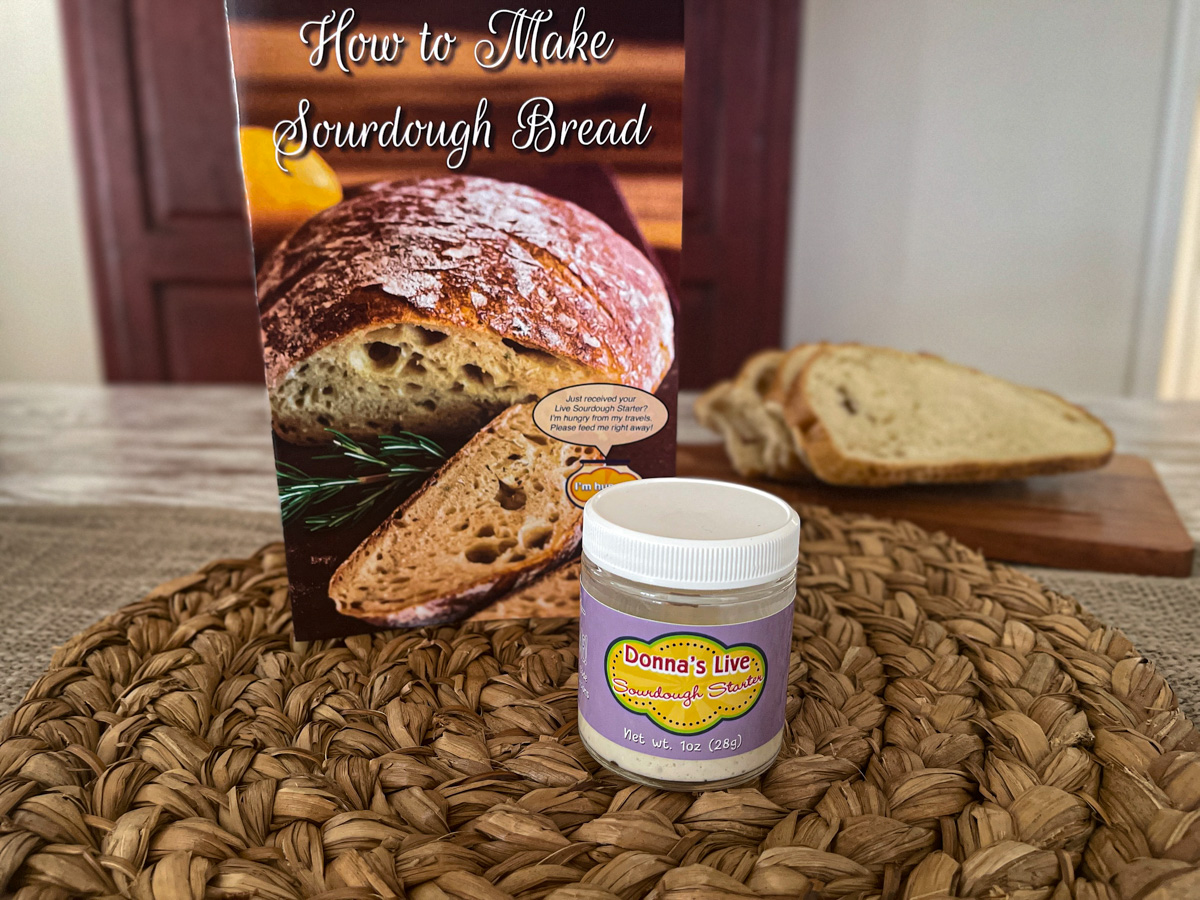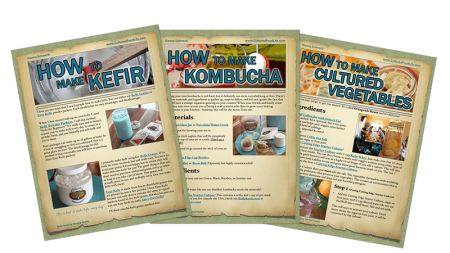
Pumpernickel Sourdough Bread
Pumpernickel Rye Bread
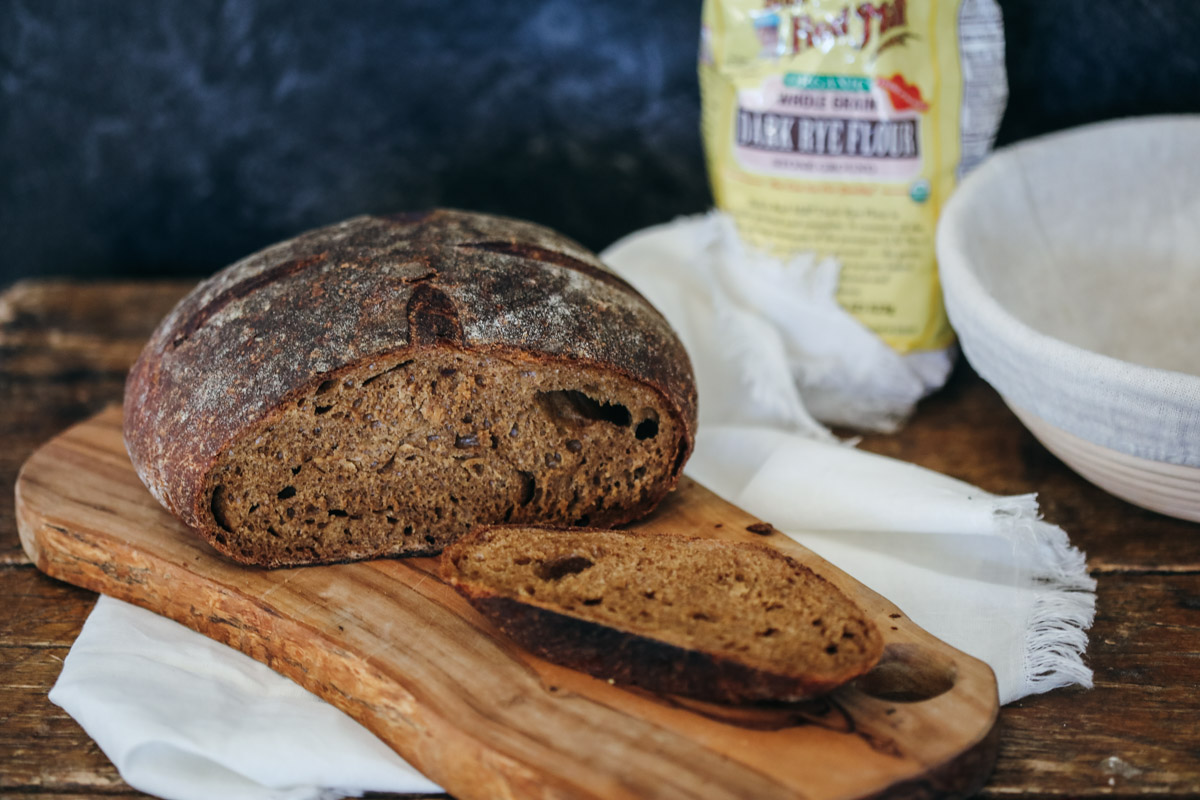
Rye flour can help you with many metabolic functions that can enhance your health. Rye flour has been shown to actually lower body weight, suppress appetite, help to improve insulin sensitivity, reduce inflammation, and lower cholesterol.[1,2,3]
Whole rye flour is less refined, coarser ground, and holds the most health benefits as compared with light or medium rye flour. Whole rye flour contains all of the germ, bran, and endosperm. Rye bread made using a sourdough culture is a completely different food than bread made without this probiotic combination of bacteria and yeasts. Here are some of the benefits of using a sourdough culture to make your bread.
Sourdough Benefits
 Phytic Acid Reduced 90% in Fermented Bread
Phytic Acid Reduced 90% in Fermented Bread
Before the 1950s, most bread bakeries ran two shifts of workers because the dough was fermented throughout the night with a long and slow process using a culture that contained the lactobacillus bacteria. This slow process was necessary for bread to be properly digested. In the process of making sourdough bread, the bran in the flour is broken down during the long rising time, releasing nutrients into the dough. Only when wheat gluten is properly fermented or sprouted (to learn more about sprouted bread click here) is it healthy for human consumption. When not, it is potentially one of the most highly allergenic foods we eat. Phytic acid, or phytate, is found in plant seeds. It serves as the main storage form of phosphorus in the seeds. It impairs the absorption of iron, zinc, and calcium and may promote mineral deficiencies in the body.[4] It is often referred to as an anti-nutrient. The phytic acid in grain needs to be 90% neutralized in order for the minerals to be absorbed by the human body. When you naturally ferment or sprout bread, you eliminate all phytic acid. About 90% of the phytic acid remains in bread made with instant yeasts unless it is sprouted or it is bread made with a sourdough culture.
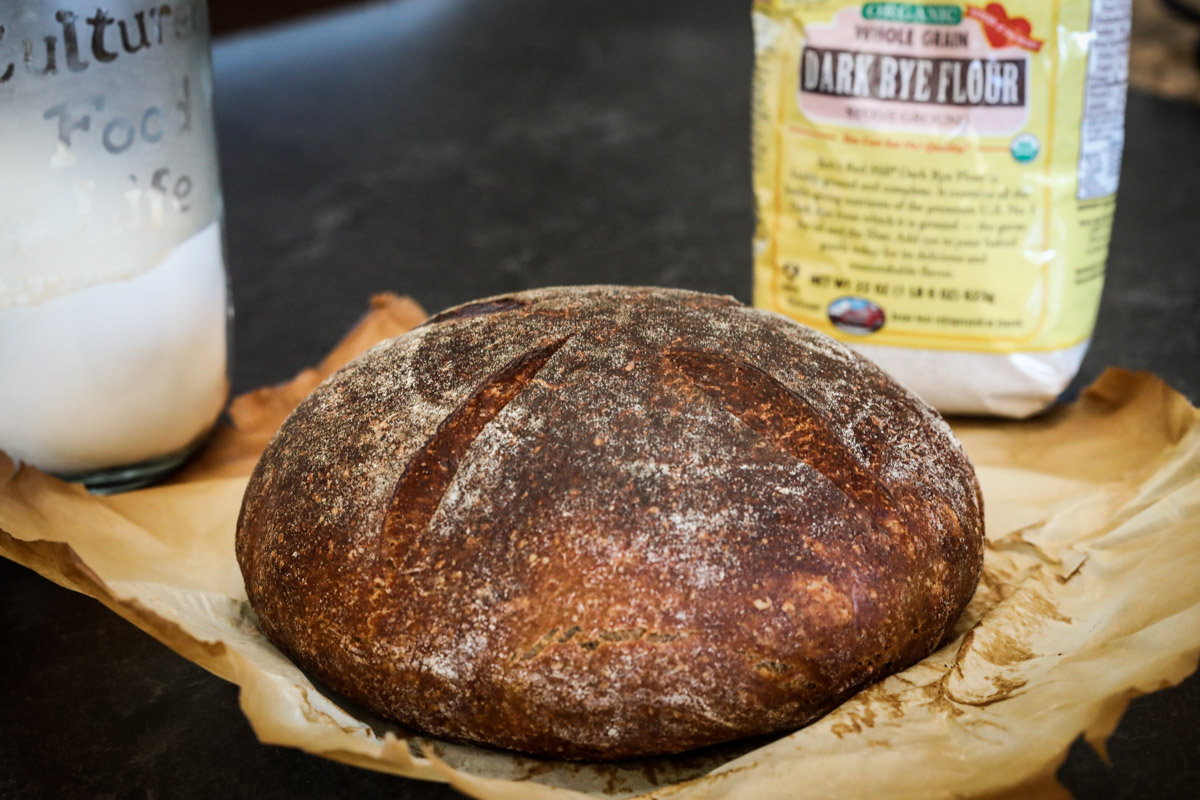 More Digestible and Lower Glycemic Index
More Digestible and Lower Glycemic Index
During the making of sourdough bread, complex carbohydrates are broken down into more digestible simple sugars, and protein is broken down into amino acids. Enzymes develop during rising. These enzymes are not lost while baking since the center of the loaf remains at a lower temperature than the crust. This fermentation, partly from lactobacillus, also allows for a bread that is lower on the glycemic index. This makes it better for those with blood sugar issues. The fermentation also helps restore the functioning of the digestive tract resulting in proper assimilation and elimination. There have been studies suggesting that sourdough bread results in more even glucose levels. In this study, the subjects’ blood glucose levels were found to be lower after eating white sourdough bread compared to whole wheat, whole wheat with barley, and plain white bread. The subjects tested after eating whole wheat bread that wasn't fermented fared the worst – with spiking blood glucose levels.[5,6]
 Increases Vitamins and Inactivates Aflatoxins
Increases Vitamins and Inactivates Aflatoxins
Sourdough bread has a very distinctive taste, mainly due to its lactic acid content produced by the bacteria during the fermentation process before baking.
This lactic acid bacteria not only preserves the bread but can also reduce mycotoxins. The sourdough process produces changes to the composition of the grain in numerous ways that make it a more beneficial food. Fermentation produces vitamin C and increases the content of vitamins B, B2, B5 and B6. Carotene, which is converted to vitamin A, increases dramatically – sometimes as much as eight-fold. Using a sourdough culture also inactivates aflatoxins which are toxins produced by fungus and are potent carcinogens found in grains. The microbial population during the fermentation period of bread making keeps evolving. In one study, it was found that the starter flours were initially contaminated with Gram-negative bacteria (which are more dangerous) Acinetobacter, Pantoea, Pseudomonas, Comamonas, Enterobacter, Erwinia, and Sphingomonas species. The abundance of these species varied with flour sources. However, within one day of the fermentation process, the populations of most of those bacterial species were eliminated and were replaced with Gram-positive bacteria, represented by lactic acid bacteria, which were present initially at a very low amount until fermentation took place. It was suggested that flour type also contributes to bacterial biodiversity.[7]
Learn to Make Pumpernickel Sourdough Bread
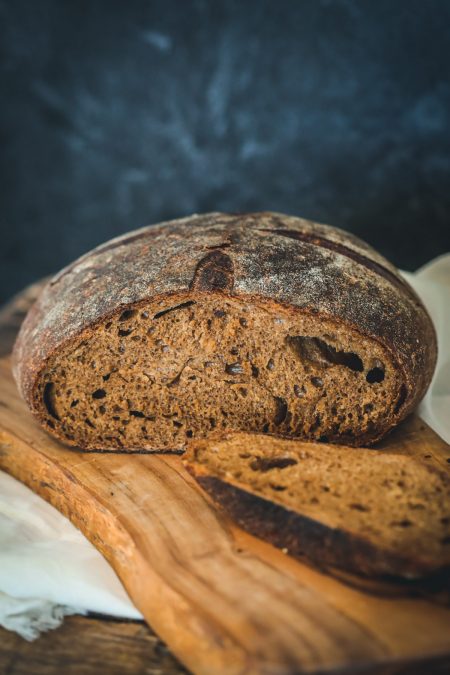
This bread makes a wonderful Reuben sandwich. Pile it high with kraut and my Billion BioticLand Dressing. I even have a vegetarian option that is crazy good. I make it often, and you will too if you give it a try. Here is the link
I highly recommend you learn to make sourdough bread of any kind. Nothing has given me more pleasure than pulling loaves of crispy sourdough bread from the oven. I never tire of it, and after almost two decades with the same starter and hundreds of loaves of bread, I've decided it is one of my most cherished possessions, along with my kefir grains, and kombucha SCOBYs. My deepest desire is for you to love it too and reap the benefits, not to mention the feeling you'll get when you feel like an artisan bread maker. Check out the recipe below and send me a picture of your bread!
References:
- https://www.ncbi.nlm.nih.gov/pubmed/19647415
- https://www.ncbi.nlm.nih.gov/pubmed/19781071
- https://www.ncbi.nlm.nih.gov/pubmed/18469276
- https://www.ncbi.nlm.nih.gov/pubmed/19774556
- https://www.ncbi.nlm.nih.gov/pubmed/18570696
- http://www.uoguelph.ca/news/2008/07/sourdough_bread.html
- http://digitalcommons.unl.edu/cgi/viewcontent.cgi?article=1160&context=foodsciefacpub
- https://www.npr.org/sections/thesalt/2018/11/12/665655220/sourdough-hands-how-bakers-and-bread-are-a-microbial-match
Are you on the list?
Sign up today and I'll send you my free Getting Started Guide!
Each week I'll send you updates, tips, recipes, and more! You might even be a winner of my weekly giveaway! (starter cultures, memberships, and more!)
Come be a part of my cultured food family!

